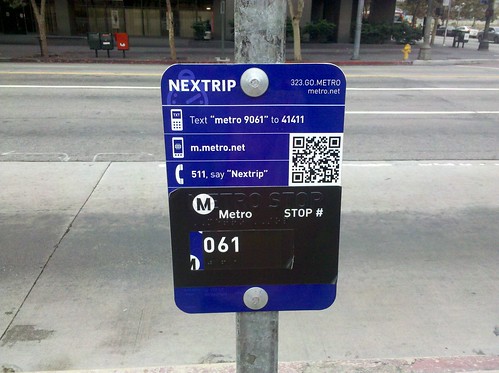
On Tuesday, September 6, 2011, at the LA Live JW Marriott, the six County Region that comprises SCAG will meet under the auspices of the Mobility 21 partnership which was created to bring more federal transportation dollars into the region. A top priority for the region is America Fast Forward that began as Mayor Villaraigosa's 30-10 plan whose purpose was to pledge Prop R funds for accelerating the Metro approved 30 year Proposition R capital program into getting done in 10 years. In our current economic climate where one needs to create jobs, fast tracking these major capital projects and their related construction jobs is a great idea.
The ExperienceLA project will be covering the Mobility 21 conference on Twitter (follow us @experienceLA) and will be using the hashtag of #mobility21 along with whatever hashtag the organizers promote. The conference is sold out, so one way to get an understanding of the discussion is to follow on Twitter. Most likely Steve Hymon, who tweets and blogs for Metro on Metro's The Source will be there posting tweets along with other social media advocates. ExperienceLA was funded by Metro through a competitive process in 2001 for the novel idea at the time to use the Internet to promote public transit and cultural destinations in Los Angeles. ExperienceLA has worked with over 2,000 cultural organizations encouraging such organizations to make sure that transit instructions show up on their site, and on ExperienceLA, one can find such cultural destinations, and instantly retrieve from the Metro Trip Planning server, the required transit instructions.
The ExperienceLA project also was a very early adopter of the use of social media to promote cultural tourism and transit in Los Angeles, and Metro itself is making great use of such tools. One example that was recently launched by Metro is the use of Nextbus real time transit information coupled with the use of QR (Quick Response) tags as shown in the picture above. Metro currently has deployed 1,000 of these, and hopes to over time have them at most of the 15,000 Metro bus stops in Los Angeles County. The way it works is that using your smartphone and using an application that is now being preloaded on many phones, or you go to the Android or Apple application store, and download for free the required software. Then with the application open, you proceed like taking a photo, and up will come information on the next buses arriving at that stop. This is much easier than prior technologies tested by Metro. It works because there are GPS tracking devices on all of the Metro buses. It is quick, easy, and reliable.
Almost six years ago, I started writing, and had it published in the Main Street monthly journal a major article discussing WiFi, mobile devices, and locational services which was presented at the June 2006 Main Street conference in New Orleans. Based upon the chatter in various blogs, the article discussed the advent of "smartphones" with features very similar to what became the Apple iPhone that was announced by Steve Jobs on January 9, 2007 and launched in June 29, 2007. In the Main Street journal article, I thought about all of the different things that could be loaded onto an iPod and especially wireless and locational services. When I wrote the article, I had a Nokia Tablet which was a relative hot seller in Europe (and a novelty in America) that gave me WiFi Internet access, and it replaced my Dell Axim which also did the same. Right now I use my Motorola Android (bought on launch day November 6, 2009) and Google transit application to obtain the scheduled information, while thinking about what MetroRail or buses to catch, including Long Beach Transit.
I was invited back to present at the Main Street Chicago conference in March 2009 in which we brought a Los Angeles panel to discuss social media in downtown Los Angeles with a focus on the Downtown Art Walk. I had a chance to attend a session to hear about how several Main Street programs were having to think about different approaches in the implementation of Main Street programs in Spanish speaking areas of the United States. At one particular session, one of the speakers stated how important it was for stores to put their phone numbers on the store window, since low cost mobile phones were becoming so important to the Latino community. I then interjected in this session that what this means is that the Apple and Android smartphones are going to completely change how lower income individuals communicate, as they will have access to the Internet with them at all times, and this will many times be their only access to the Internet.
This is why the Metro investment in the QR tag signs is a smart move, as Lucy Hood from the USC Marshall School of Business, wrote in the August 29, 2011 Wall Street Journal about how smartphones are closing the digital divide. Thus, smartphones will be everywhere, and thus the QR tag technology deployed by Metro as it spreads across the County and the universal adoption of such phones with these most basic tools, will be of benefit to all income levels in Los Angeles. And we will begin to see businesses with a QR code sign on their window, so that someone can easily bring up the website for the business.

No comments:
Post a Comment